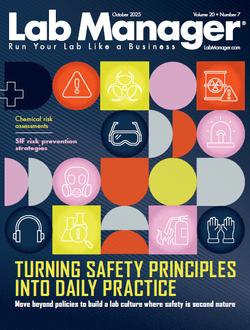Microscopy plays a foundational role in biological research, clinical diagnostics, materials science, and quality control processes. Choosing the right microscopy method can enhance your lab’s imaging capabilities, whether you’re studying cell morphology, analyzing tissue samples, or inspecting microstructures in industrial materials.
Two widely used options are digital microscopy and optical microscopy (also referred to as light microscopy). Each method offers unique strengths in terms of image capture, magnification range, ease of data sharing, and real-time analysis capabilities.
This article compares digital microscopy and optical microscopy, focusing on factors such as versatility, image quality, data integration, workflow efficiency, and cost-effectiveness to help labs select the right technology.
What is Optical Microscopy?
Optical microscopy uses visible light and a system of lenses to magnify and observe specimens directly through an eyepiece. This traditional approach is widely used in biology, clinical pathology, materials science, and education, providing real-time visualization of cells, tissues, and materials. Optical microscopes can accommodate a variety of contrast techniques, including brightfield, darkfield, phase contrast, and polarized light microscopy, enhancing their flexibility across disciplines. These systems are ideal for routine biological imaging, histological analysis, microbial identification, and particle size characterization in industrial settings. Due to their ease of use, they are also widely used in educational settings to train students in basic microscopy techniques and sample preparation methods. Their reliance on straightforward mechanical and optical components makes them highly durable and easy to maintain, ensuring long-term reliability even in high-use environments.
Advantages of Optical Microscopy:
- Direct Observation: Immediate visual feedback via eyepiece.
- Proven Technology: Decades of development and optimization.
- Broad Range of Applications: Suitable for biological, medical, and industrial uses.
- Lower Initial Cost: Entry-level systems are affordable for teaching and basic research.
Challenges of Optical Microscopy:
- Limited Digital Integration: Manual data recording may slow workflows.
- Field of View Constraints: Depends on eyepiece configuration.
- Limited Documentation Options: Capturing images requires separate camera attachments.
- User Variability: Image interpretation may vary between operators.
What is Digital Microscopy?
Digital microscopy uses a high-resolution digital camera in place of an eyepiece to capture images directly, which are displayed on a computer monitor. Digital microscopes are optimized for high-resolution imaging, automated analysis, and easy data sharing, making them ideal for collaborative environments and remote diagnostics. These systems often feature real-time image enhancement tools, allowing users to adjust contrast, brightness, and color balance during image acquisition, ensuring optimal visualization across different sample types.
Advanced digital microscopy platforms also support automated sample scanning for high-content imaging workflows, where entire slides or multi-well plates are systematically imaged and stitched together. This capability is especially beneficial in tissue pathology, materials science, and quality control environments where large areas need to be documented with high precision.
In addition, digital microscopes facilitate remote collaboration, enabling real-time sharing of images and analysis results with off-site experts. This feature has become increasingly valuable in telepathology, collaborative research projects, and global quality assurance processes, where rapid expert input can accelerate decision-making.
Advantages of Digital Microscopy:
- Enhanced Documentation: Digital images and videos are captured automatically.
- Integrated Measurement Tools: Enables automated image analysis and quantification.
- Remote Viewing: Facilitates real-time remote collaboration.
- Advanced Imaging Options: Supports 3D imaging, extended depth of field, and image stitching.
Challenges of Digital Microscopy:
- Higher Cost: Advanced systems can be expensive.
- Learning Curve: Requires training on software and image processing.
- Reliant on Hardware Integration: Image quality depends on camera resolution and optics quality.
- Data Management: Large files require robust storage solutions.
Versatility: Applications Across Disciplines
Optical Microscopy excels in routine biological research, histology, microbiology, and teaching labs, where direct observation and ease of use are priorities. It supports a range of techniques, including brightfield, phase contrast, and polarized light microscopy, making it adaptable to biological and materials science applications.
Digital Microscopy offers greater versatility for research labs, quality control facilities, and collaborative projects requiring detailed documentation, image analysis, and remote consultation. Its seamless integration with digital archives, automated analysis software, and remote diagnostic platforms enhances its value for multi-user labs and global teams.
✅ Verdict: Digital microscopy offers greater versatility across research, clinical, and industrial settings.
Image Quality and Resolution
Optical Microscopy delivers high-quality real-time images, but image quality heavily depends on operator skill, lens quality, and lighting conditions. While capable of high-resolution imaging at up to 1000x magnification, documentation quality may suffer without dedicated camera systems.
Digital Microscopy benefits from high-resolution digital sensors, automated focus stacking, and real-time image processing, providing enhanced clarity, contrast, and depth of field. Advanced systems can combine multiple images to create ultra-high-resolution composite images.
✅ Verdict: Digital microscopy provides superior image capture and resolution.
Data Integration and Documentation
Optical Microscopy typically relies on manual notes and separate camera systems for documentation, which can introduce workflow delays and increase the risk of data entry errors.
Digital Microscopy seamlessly integrates with LIMS systems, digital archives, and automated reporting platforms, ensuring fast data capture, standardized documentation, and easy access for remote reviewers.
✅ Verdict: Digital microscopy excels in data integration and documentation.
Workflow Efficiency and Automation
Optical Microscopy supports quick visual assessments, ideal for on-the-fly sample screening, but offers limited automation beyond basic motorized stages.
Digital Microscopy supports automated slide scanning, pattern recognition algorithms, and automated feature quantification, accelerating data collection and reducing operator variability.
✅ Verdict: Digital microscopy supports faster, more automated workflows.
Cost Considerations
Optical Microscopy offers lower upfront costs, especially for basic systems, with benchtop student microscopes priced from $500 to $3,000 and research-grade compound microscopes ranging from $5,000 to $30,000.
Digital Microscopy systems, particularly those with high-resolution cameras and advanced imaging software, range from $10,000 to $100,000. However, improved documentation, reduced analysis time, and remote collaboration features may offset the higher initial investment.
✅ Verdict: Optical microscopy is more affordable upfront, while digital microscopy delivers long-term value in data-driven labs.
Summary Table: Optical vs. Digital Microscopy
| Factor | Optical Microscopy | Digital Microscopy |
|---|---|---|
| Image Capture | Manual, camera optional | Automatic, integrated |
| Resolution | High (operator dependent) | High (automated enhancement) |
| Data Integration | Minimal | Seamless with LIMS |
| Automation | Limited | High |
| Cost | Lower initial cost | Higher initial investment |
Conclusion: Choosing the Right Microscopy Method for Your Lab
The choice between optical microscopy and digital microscopy depends on your lab’s needs for documentation, automation, and collaboration.
- For routine visual assessments, teaching labs, and small-scale biological or materials analysis, optical microscopy offers a cost-effective, proven solution.
- For high-volume imaging workflows, collaborative research, and applications requiring detailed documentation and advanced analysis, digital microscopy offers superior capabilities and long-term value.
Many labs adopt a hybrid approach, combining optical microscopes for direct observation with digital systems for archival imaging and collaborative research projects.
This content includes text that has been generated with the assistance of AI. Lab Manager’s AI policy can be found here.










